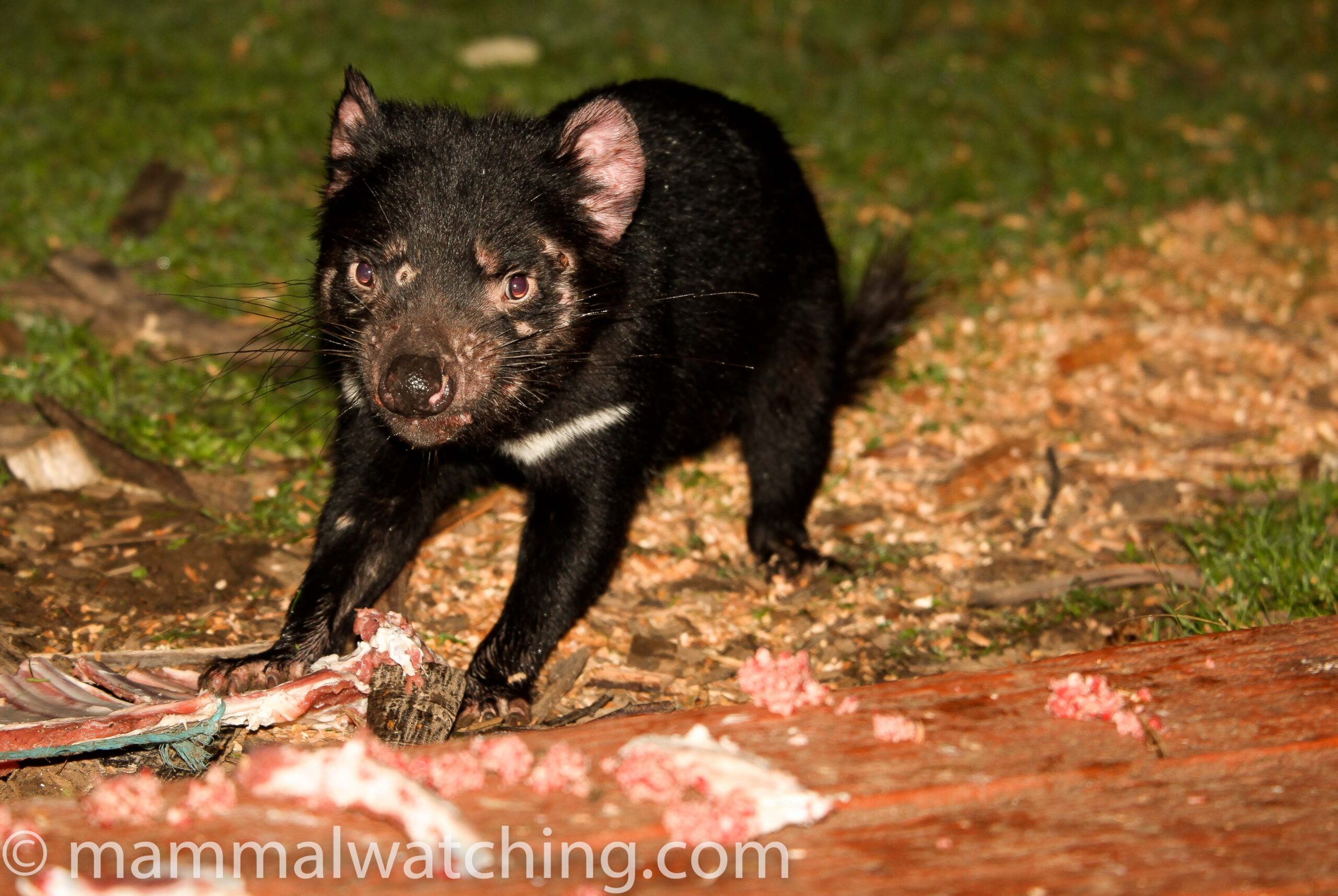
Tasmania
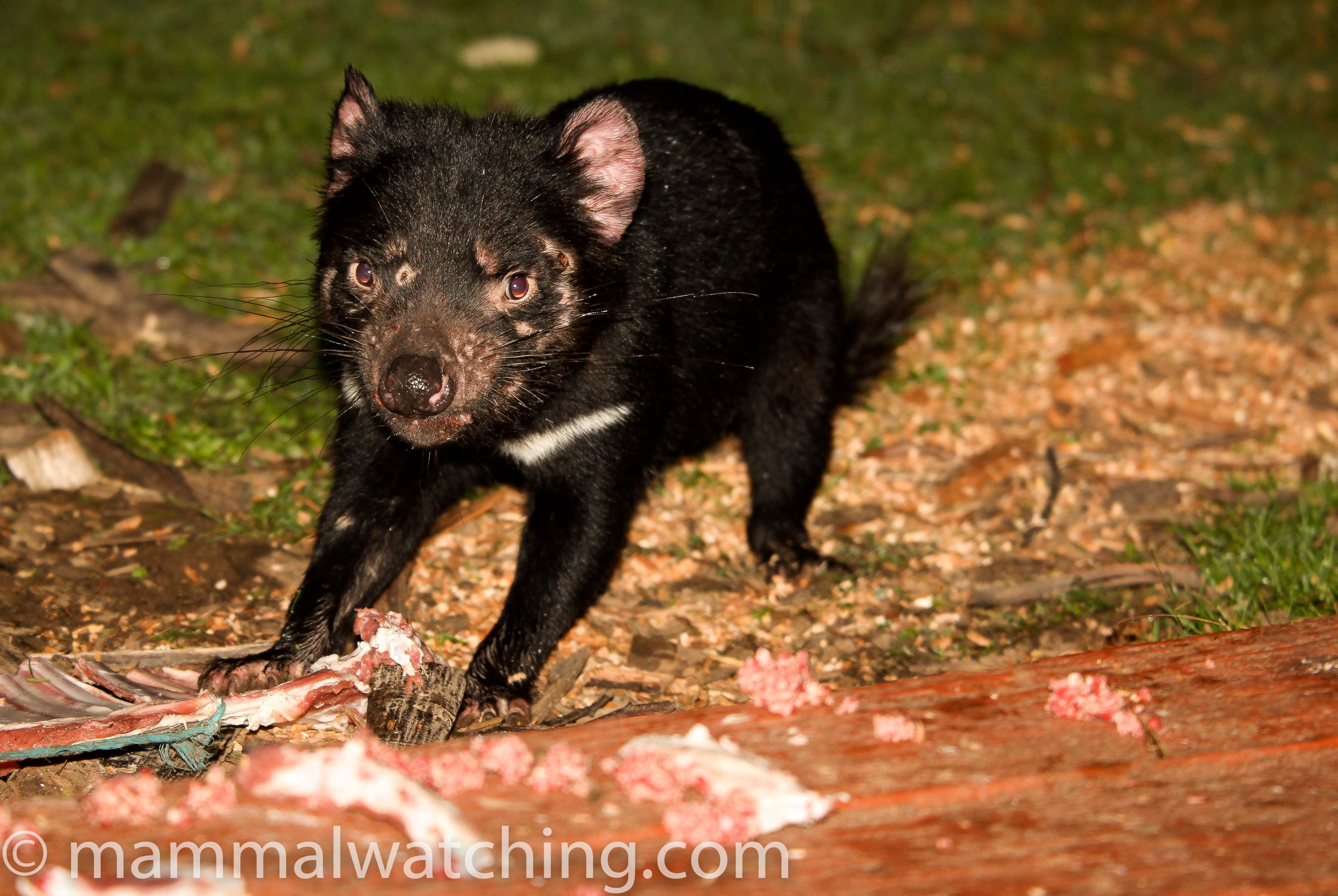
Tasmanian Devil, Sarcophilus harrisii
Australian mammal viewing is easier in Tasmania than most other bits of Australia: only some of the Western Shield reserves of south-west Western Australia and Kangaroo Island rank alongside it in my opinion. The highways are peppered with a variety of road-kill – so much so that the best way to see Tasmanian wildlife might be from a glass-bottomed bus. This abundance of mammals is largely due to the absence of Red Foxes (which, not so strangely enough, are also absent from Kangaroo Island and the Western Shield reserves). Foxes appeared on the island in the early 2000s, but appear to have been eradicated by 2011. Most of the information below predates the terrible outbreak of Devil facial tumour disease which has ravaged the Tasmanian Devil population: please read the most recent reports or put an RFI on the Community Forum for the latest information if you want to see Devils.
I’ve looked for mammals on Tasmania several times. Once over Christmas 2000, again in March 2001, April 2010 and Christmas 2018. Many consider Tasmania to be Australia’s most beautiful state. Places like Cradle Mountain are indeed spectacular, though in a European sort of a way (albeit with cleaner air, cleaner water and cheaper petrol).
Hobart: the Waterworks Reserve in Hobart is a good place to look for Tasmanian Bettongs, quite a tricky species to see elsewhere in the State though I did not find them in 2019. There are possum, pademelons and probably other stuff here too. Eastern Barred Bandicoots are also here.
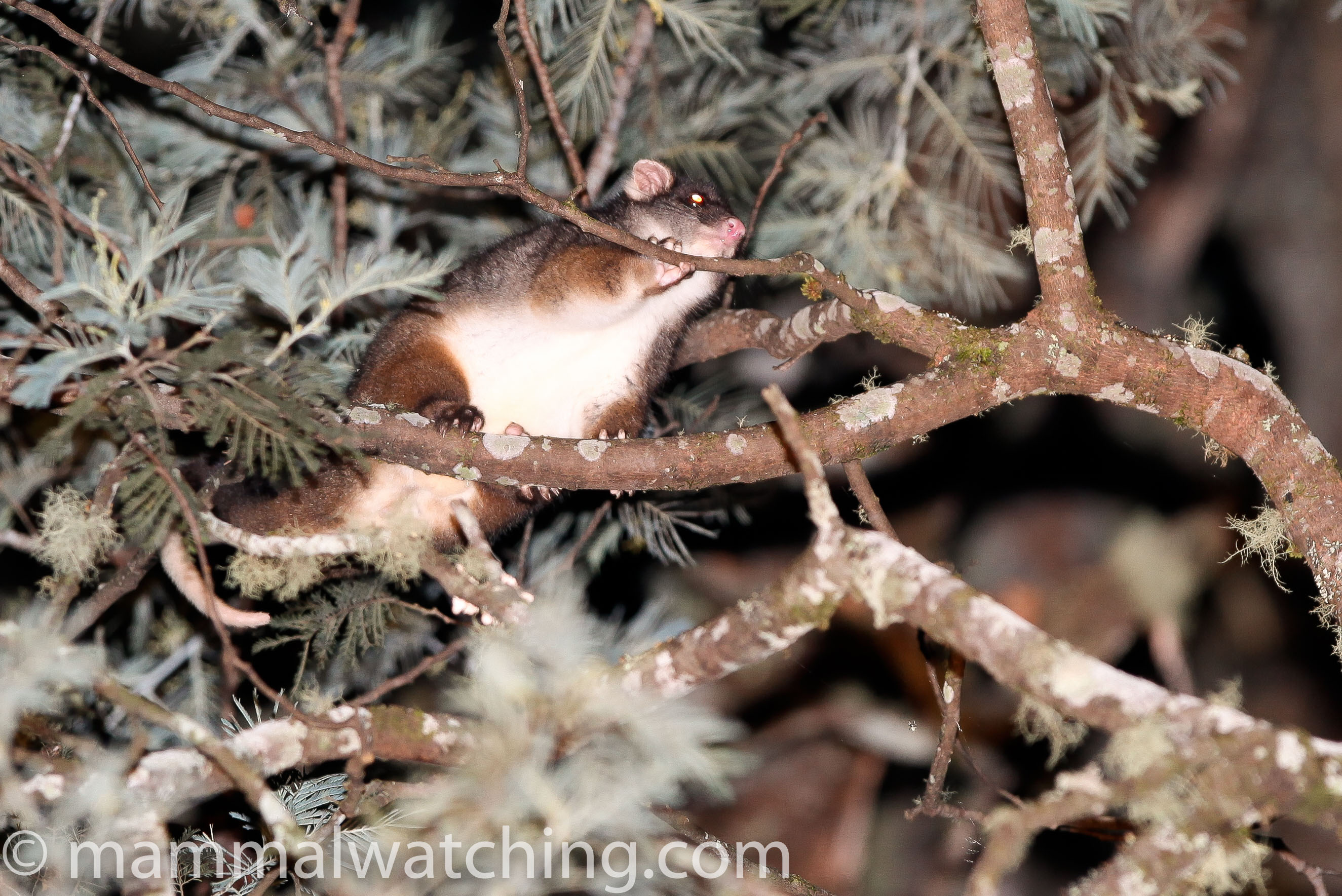
Common Ringtail Possum, Pseudocheirus peregrinus
Mount Field is just a couple of hours drive from Hobart, and is a good spot to see a range of mammals. I saw two Eastern Barred Bandicoots, which seem to be rather uncommon in Tasmania (both were just outside the park after sunset – one was running over the bridge into the park). Eastern Quolls (both colour phases) were quite common and approachable in the campsite. Tasmanian Pademelons were abundant near the campsite at dusk. Other mammals there included Common Brushtail Possums, a Southern Brown Bandicoot, Echidnas and a Wombat (in the middle of the day). Long-tailed Mice (Psuedomys higginsi), endemic to Tasmania, are present and supposedly quite numerous in scree slopes, but I didn’t see any.
The road that leads from Mt Field to Lake Pedder cuts into the great wilderness of the south west. Driving it at night produced Eastern Quolls, Tasmanian Devils and Possums.
Cradle Mountain is worth visiting for the scenery alone. But there are also good mammals. Cradle Mountain Lodge, in particular, is worth a visit even if you cannot afford to stay there. It had a resident family of Tasmanian Devils living underneath: they emerged on cue each dusk. The mosaic of ponds and streams in the hotel grounds are worth checking out too: I had my best ever view of a Platypus here while I was spotlighting one evening as it swam right underneath me and the little footbridge on which I was standing. Driving from the lodge up to Dove Lake is a good spotlighting route: Eastern Quolls, Tasmanian Pademelons and Wombats were all quite common.
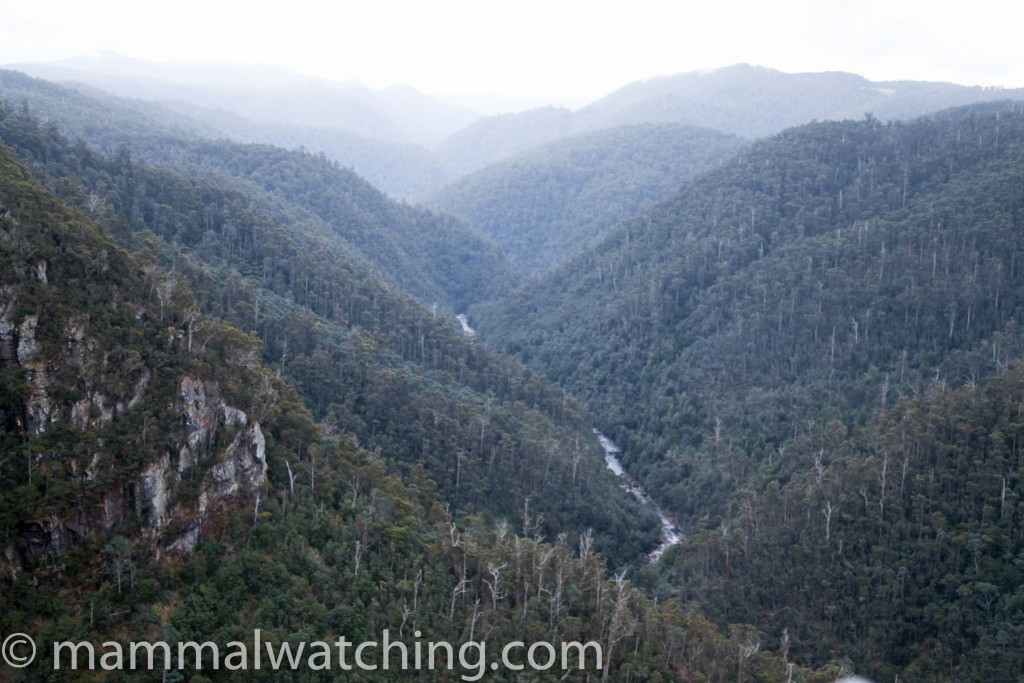
Leven Gorge, near Loongana
Loongana near Devonport: Not far north of Cradle Mountain Mountain Valley Wilderness Holidays, is a property near Loongana where Tasmanian Devils and Platypus are common and Spot-tailed Quolls are regular visitors especially in winter. I stayed here for a couple of nights in April 2010 with my kids. Its a great spot. Unfortunately the Quolls were not around (though had been coming every night until a week before I arrived), but it was easy to see the Devils who are fed on the cabin steps, and the kids loved it. Brushtail Possums and Tasmanian Pademelons were plentiful too. Platypus were easy to see in the river 100 metres from the cabins, and we found a Ringtail Possum along the road at night. I saw largely the same species when I returned in 2019.
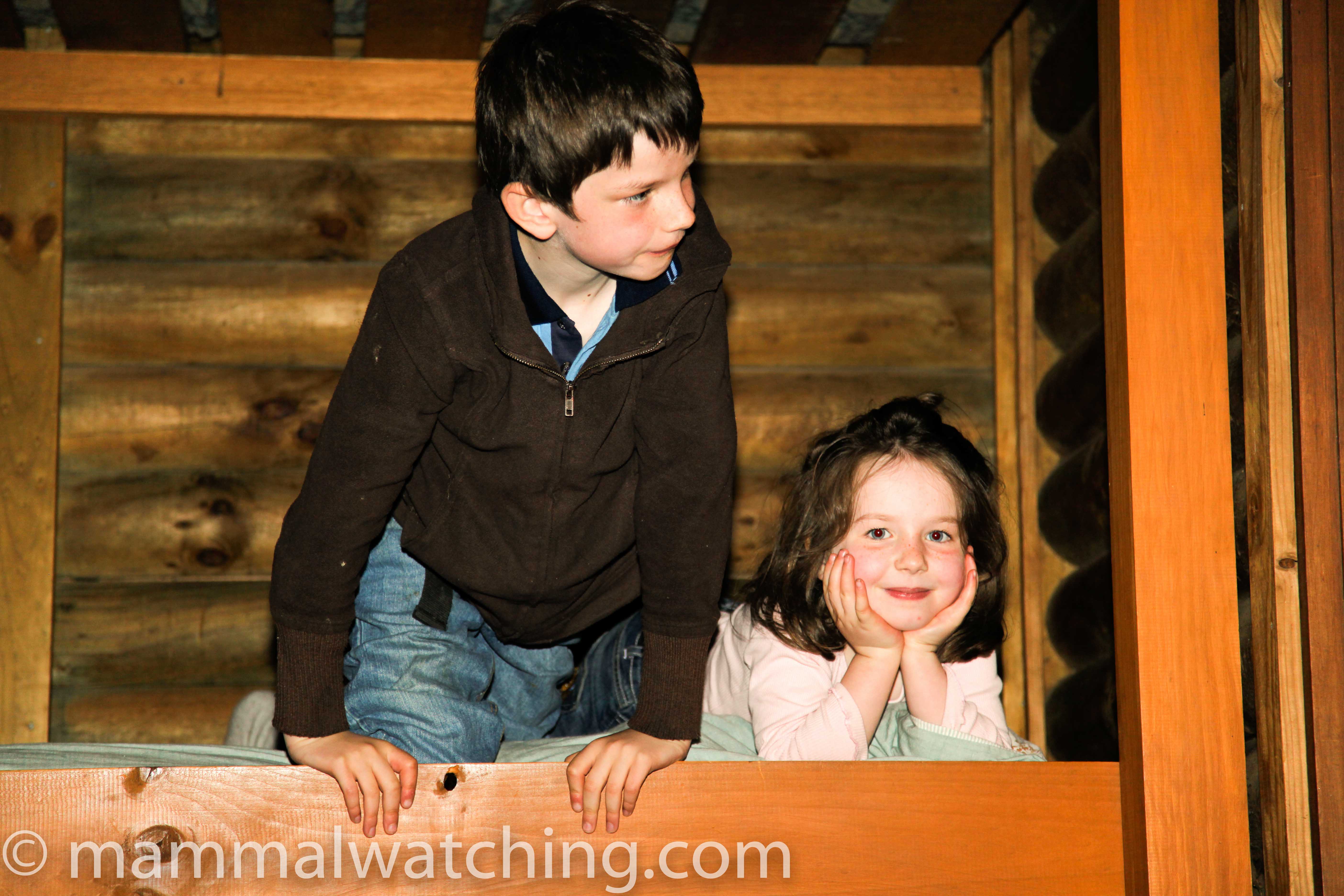
Patrick & Katy on the top bunk waiting for Devils
Birdwatchers know the Forest Glen Tea Gardens as a good spot for some nice species including Swift Parrots. Long-nosed Potoroos are common there, and quite easy to see if you walk quietly and listen for their rustlings early in the morning or late in the afternoon.
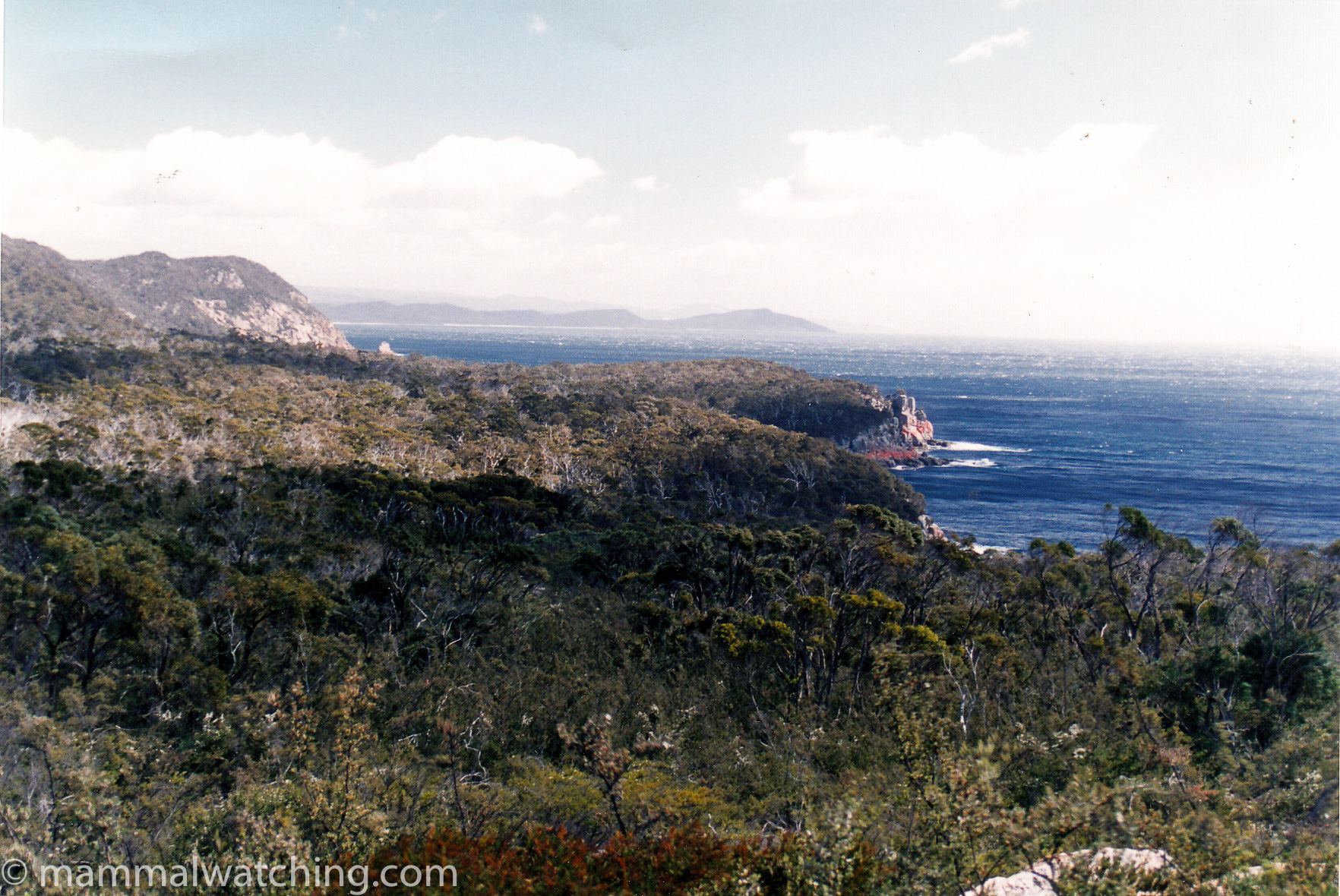
Tasmanian coastline
Coles Bay, on the south east coast has Bennet’s Wallabies (a subspecies of Red-necked Wallaby). I saw my first Tasmanian Devil here.
The north-east of Tasmania, around the Bridport area in particular, has some of the State’s best mammal watching. I spent a long evening around the small town of Scottsdale looking for animals with Craig Williams, a local tour operator. We saw several Eastern Quolls, many Pademelons, Eastern Barred Bandicoots and of course Possums and Echidnas. But I didn’t see either of the two species I was chasing – Tasmanian Bettongs and Tiger (Spotted-tailed) Quolls. Both are reputed to be around in quite good numbers. So I carried on looking on my own and eventually saw a Tiger Quoll on the C832 road and soon after found a colony of Tasmanian Bettongs living in a paddock alongside that road (their short muzzles give the Bettongs a really quite distinctive, sort of mouse like appearance, when compared to the more kangaroo-like Pademelons).
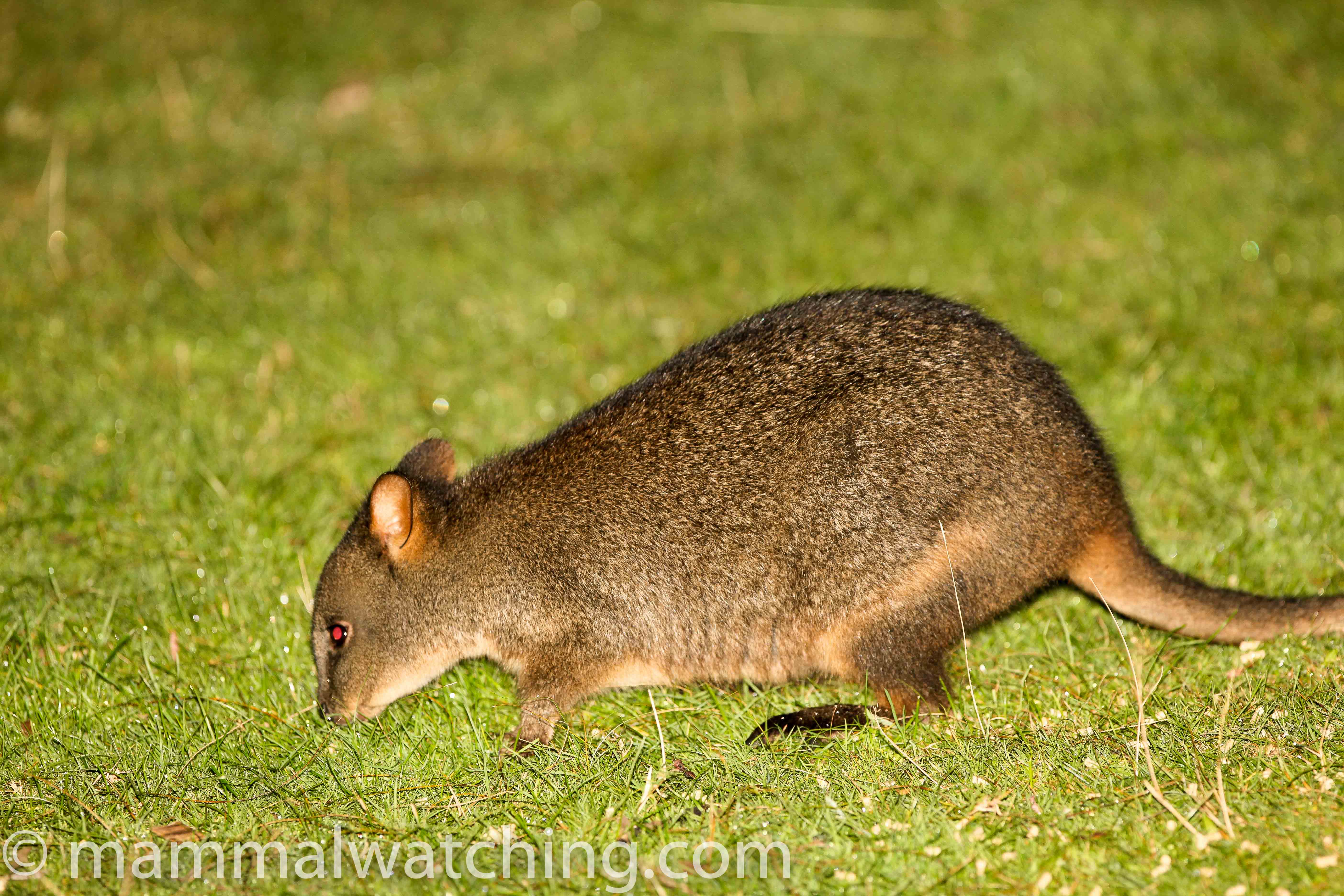
Tasmanian Pademelon, Thylogale billardierii
Other mammals
Long-tailed Mice are reasonably common across the island I am told though I haven’t seen them. They are supposed to be on Mt Wellington in Hobart for example and are caught most often in scree slopes. Tasmania is also home to Little Pygmy Possums, which are now much easier to find with a thermal scope. I saw one on Mount Wellington in 2019.
Tasmania has to be the best place in Australia to see Leopard Seals. Juvenile vagrant Leopard Seals regularly haul out in Tasmania during August-November, although I am not sure that they can be guaranteed anywhere (if they could have been I would have gone). They can crop up anywhere. I was once in Hobart for work and the evening news reported one at the city’s shipyards. I spent several cold hours walking around the docks that night. No seal. The next morning, when I read the story in the paper and got the correct name, the Hobart slip-yards were already seal-less. But some seals stay for several weeks.
Community Reports
Tasmania (and a bit of Victoria), 2024: Patrick Hall, 5 days & 15 species including Spot-tailed Quoll, Eastern Bettong and Tasmanian Devil.
Tasmania, 2024/25: BW, 12 days & 17 species including Spot-tailed Quoll, Tasmanian Devil and a Long-tailed Mouse.
Tasmania, 2024: John Wright, 17 days & 23 species including Swamp Antechinus, Tasmanian Devil, Eastern & Tiger Quolls and Platypus.
Hobart, 2024: Michael Sebastian’s note of 4 species around Hobart including Eastern Barred Bandicoot.
Tasmania, 2022: Michael Sebastian, 2 weeks & 9 species including Spot-tailed and Northern Quolls, Platypus and Tasmanian Devil.
Tasmania, 2022: Warren Gilson, 9 days & 9 native species including Echidna, Spot-tailed Quoll and Tasmanian Bettong.
Tasmania, 2021-22: Brett Taylor, 12 days & 19 species including New Zealand Fur Seal, Eastern-barred Bandicoot and Spot-tailed Quoll.
Victoria & Tasmania, 2020: Alan Dahl, 3 weeks & 24 species including – in Tassie – Tasmanian Devil, Eastern Barred Bandicoot and Water Rat (Rakali).
Melaleuca, 2019: Michael Johnson’s note of a visit to a remote area featuring a Broad-toothed Mouse, and not much else mammalian.
Tasmania, 2019: Tyler Hicks, 17 days & 10 species including Tasmanian Devil and Eastern Quoll. Some nice video too linked to the report.
Hobart and Loongana, 2019: Jon Hall, 3 nights & 8 species including an Eastern Pygmy Possum.
A Mammalwatching Year, 2018: Jannico Kelk’s account of mammals in WA, Qld and Tas, including Honey Possum, Brush & Red-tailed Phascogales and some nice bats. Wonderful photos.
Tasmania, 2018: Ian Merrill, 2 weeks & 14 species including Tasmanian Devil and Tiger and Eastern Quolls.
Australia, 2018: Valentin Moser’s report of mammals seen over the course of 75 days on several trips. He saw over 100 mammals including Mahogany Glider, both Feathertail Gliders, Proserpine Rock Wallaby, Numbat and Honey Possum.
South- East Tasmania, 2017: Jimmy Lamb, 2 weeks with some nice mammals and pictures including Eastern Quolls, Eastern-barred Bandicoots and a Swamp Rat.
Tasmania, 2017: Jimmy Lamb, 16 nights with species including Tiger and Eastern Quolls, Eastern Barred-bandicoot and Tasmanian Bettong. Great pictures and seemingly very reliable sites for key species listed in this report.
Australia, 2016: Mike Hoit, 5 weeks & many species including – in Tasmania – Tasmanian Long-eared Bat, Eastern-barred Bandicoot and Swamp Rat.
Maria Island National Park, Tasmania, 2015: Dr. Nina Denhard
Tasmania, 2015: Jimmy Lamb, 2 weeks and all of the larger land mammals including Tiger Quolls and Tasmanian Bettongs.
WA, Qld & Tas, 2015: Steve Morgan, 4 weeks & 45 species including Tiger Quoll, Honey Possum and Eastern Long-eared Bat.
Australia and New Zealand, 2014/15: Pieter de Groot Boersma, 10 months & 117 species including Brush-tailed Rabbit Rat, Feathertail Glider, Leadbeater’s Possum, Northern Bettong, Prehensile Tailed Rat and Cape York Rock Wallaby. <<Note: the Nailtail Wallaby was in fact Northern, not Bridled. And expert opinion think the mysterious macropod discussed at the end of the report was a Short-eared Rock Wallaby not a Narbalek.>> Click here to search for Pieter’s various videos from Australia.
Australia & Hong Kong 2015: Dominique Brugiere, 6 weeks & some nice species including Southern Hairy-nosed Wombat, Yellow-footed Rock Wallaby, Woylie, Koala, Eastern Pygmy Possum, Tiger & Western Quolls and Honey Possum.
Tasmania, Victoria & South Australia, 2014: Juan Luis Ortega, 2.5 weeks & 28 species including Tiger Quoll, Broad-toothed Rat and Giles’ Planigale.
Queensland and Tasmania, 2014: Romain Boquier, 6 weeks & 63 species including Tiger Quolls and Eastern Barred Bandicoots in Tasmania.
Australia & Singapore, 2013: Andrew and Ben Balmford, 2 months & 98 species! Including, in Tas, Tiger Quoll and Tasmanian Devil.
Australia and New Zealand, 2011: Matt and Maureen Steer, 12 weeks & 50 species including a Tiger Quoll in Tasmania.
Tasmania, 2010: Fiona Reid, 2 weeks & 18 species including Tiger Quoll, Tasmanian Bettong and a White-footed Dunnart.
Western Australia, Alice Springs & Tasmania (2008): Don Roberson, 2 weeks and 18 mammals.
Around the World (Australia), 2004: Richard Webb, 6 weeks.
Also See
RFI Mega Trip to Australia, September 2024
RFI Tasmanian Devils, September 2024
RFI Devils on Maria Island, January 2024


Leave a Reply
You must be logged in to post a comment.